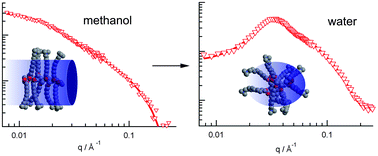The effect of degree of polymerization on intra- and interchain micellization of a tail-type cationic polysoap†
Abstract
We have used Reversible Addition Fragmentation chain Transfer (RAFT) to polymerize the T-type

Maintenance work is planned for Wednesday 1st May 2024 from 9:00am to 11:00am (BST).
During this time, the performance of our website may be affected - searches may run slowly and some pages may be temporarily unavailable. If this happens, please try refreshing your web browser or try waiting two to three minutes before trying again.
We apologise for any inconvenience this might cause and thank you for your patience.
* Corresponding authors
a
School of Chemistry, F11, The University of Sydney, Australia
E-mail:
gregory.warr@sydney.edu.au
Fax: +612 9351 3329
Tel: +612 9351 2106
We have used Reversible Addition Fragmentation chain Transfer (RAFT) to polymerize the T-type

 Please wait while we load your content...
Something went wrong. Try again?
Please wait while we load your content...
Something went wrong. Try again?
P. A. FitzGerald, D. M. McDonald and G. G. Warr, Soft Matter, 2013, 9, 2711 DOI: 10.1039/C3SM27573F
This article is licensed under a Creative Commons Attribution 3.0 Unported Licence. You can use material from this article in other publications without requesting further permissions from the RSC, provided that the correct acknowledgement is given.
Read more about how to correctly acknowledge RSC content.
 Fetching data from CrossRef.
Fetching data from CrossRef.
This may take some time to load.
Loading related content
